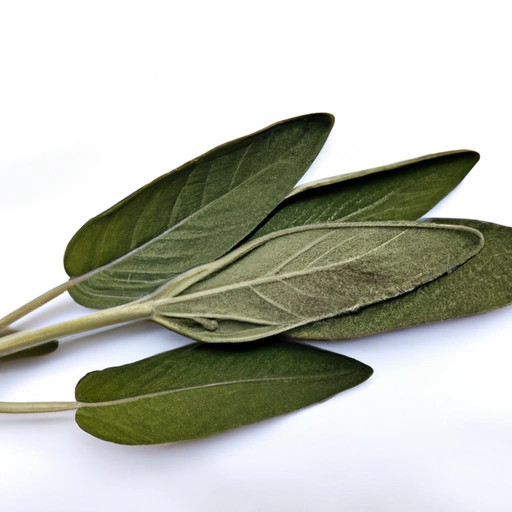Sage
Description

Sage, known scientifically as Salvia officinalis, is a perennial, evergreen subshrub with woody stems and grayish leaves. It belongs to the mint family, Lamiaceae, and is native to the Mediterranean region. With its distinctive earthy flavor and aroma, sage is a staple herb in various cuisines around the globe and is available in fresh, dried, and ground forms. It is used in both metric (grams, milliliters) and imperial (ounces, cups) measurements, catering to an international audience.
Common uses
Sage is commonly used to season and flavor meats, soups, and stews. It is also a key ingredient in stuffing, particularly for poultry, and is often paired with onion, garlic, and thyme. The leaves are used to make sage tea, which is believed to have several health benefits.
Nutritional value
Calories
Fresh sage contains approximately 2.5 to 3 calories per teaspoon (0.7 grams) and dried sage contains about 315 calories per 100 grams or around 5 calories per teaspoon (1 gram).
Protein
Sage offers about 0.1 grams of protein per teaspoon (0.7 grams) of fresh leaves and 10.6 grams of protein per 100 grams of dried sage.
Fat
The herb is low in fat, providing a negligible amount in both its fresh and dried forms.
Carbohydrates
Fresh sage contains less than 0.5 grams of carbohydrates per teaspoon (0.7 grams), while dried sage contains 60.73 grams of carbohydrates per 100 grams.
Vitamins
Sage is a good source of vitamin K, providing significant amounts especially in its fresh form. It also contains other vitamins in smaller amounts.
Minerals
The herb provides minerals such as calcium, iron, and manganese, which are more concentrated in the dried form due to the reduced water content.
Health benefits
Sage has been traditionally used for its potential health benefits, including improving brain function, lowering blood sugar levels, and providing antioxidant effects. However, these benefits have not been conclusively proven and should be considered alongside a balanced diet.
Potential risks
While sage is generally safe for culinary use, consuming it in large amounts or in medicinal preparations may not be safe for everyone. Some compounds in sage, such as thujone, can be toxic in high doses. Pregnant and breastfeeding women should avoid excessive amounts of sage.
Common recipes
Sage is a key ingredient in many recipes, including classic holiday stuffing, sage butter sauce for pasta, and various pork and poultry dishes.
Cooking methods
This versatile herb can be used fresh, fried, or dried and added to dishes. It infuses flavor into oils and butters, creating aromatic bases for cooking.
Pairing with other ingredients
Sage pairs well with fatty meats like pork and duck, root vegetables, and beans. It also complements dairy products, such as cheese and cream-based sauces.
Summary
Sage is a fragrant herb with a long history and a wide range of uses in the kitchen. Whether fresh or dried, it brings depth to dishes and provides nutritional benefits. However, it should be used in moderation to avoid any potential risks. Embracing sage in culinary practices can enhance many recipes and offer a touch of tradition and flavor.